To save their soil, Kansas tribe shifts to regenerative agriculture – and transforms their farms
By Will Pry, American Heart Association News
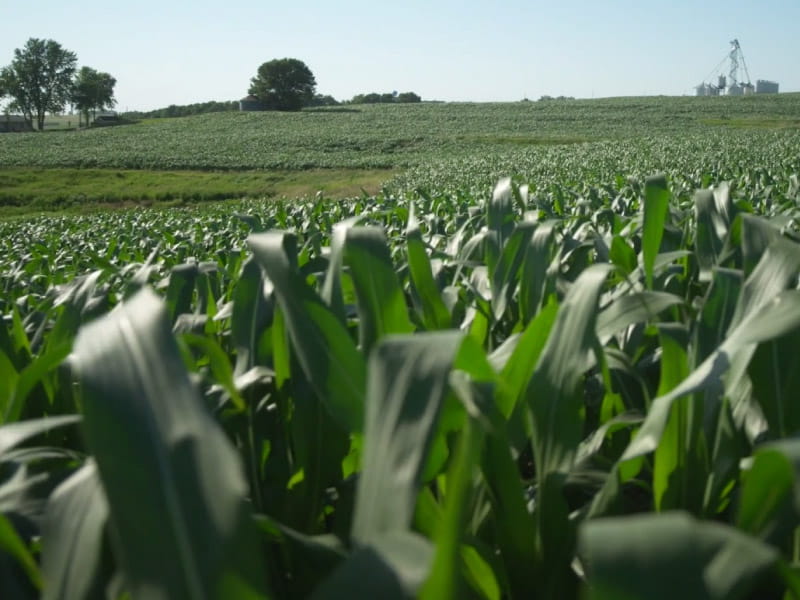
IOWA TRIBE OF KANSAS AND NEBRASKA RESERVATION, Kansas — When one of the elders in the Iowa Tribe of Kansas and Nebraska asked if he could keep bees on the reservation, Tim Rhodd's answer was straightforward: "Absolutely."
Soon, the bees started buzzing in the alfalfa fields. Then they started pollinating.
Then they all died.
"Once we started looking into it, we found there was a chemical (class) called neonicotinoid that caused the death of these bees," said Rhodd, the tribe's chairperson. "That was the very, very first part of what I had seen that we were doing things wrong."
Facing the reality that their soil was contaminated – and the realization that the same harmful insecticides that killed the bees would be bad for them, too – the Ioway started questioning their farming practices.
After receiving a grant in 2019, the tribe switched its farming operations from monocropping – growing one plant in the same soil, year after year – to regenerative agriculture, a process designed to promote biodiversity and soil health by minimizing disturbances and maintaining living roots as much as possible.
By caring for a rotation of diverse crops throughout the year – rather than controlling the soil year-round for just one seasonal crop – farmers eliminate the need for herbicides and pesticides.
Moving away from monocropping is as much a challenge to standard practice as it is a physical feat. The so-called Green Revolution in the 1960s changed industrial farming to address food shortages by ushering in the extensive use of fertilizers, herbicides and pesticides. Working to improve the yield of a single crop became the norm, thanks in part to profitability and operational efficiency.
But monocropping has been shown to damage soil health, and farmers' reliance on pesticides and herbicides can harm pollinators and water supplies while insects and weeds rapidly develop resistance to the chemicals.
"Just monocropping, eventually you use up all of your nutrients," said Olivia Brien, tribe member and its director of communications. "And what happens is that you run out of the nutrients to grow good food, so then you'd have a desert. It becomes a desert."
(VIDEO: The Ioway build food sovereignty in Kansas)
The tribe's Ioway Farms operation has implemented regenerative practices and indigenous methods across 2,400 acres of row crop production and 2,500 acres of pastureland in rural northeast Kansas, near White Cloud. The tribe runs Ioway Farms along with several other ventures – including a bee farm, a seed company, a hemp farm and an orchard that includes pears, peaches, plums and apples.
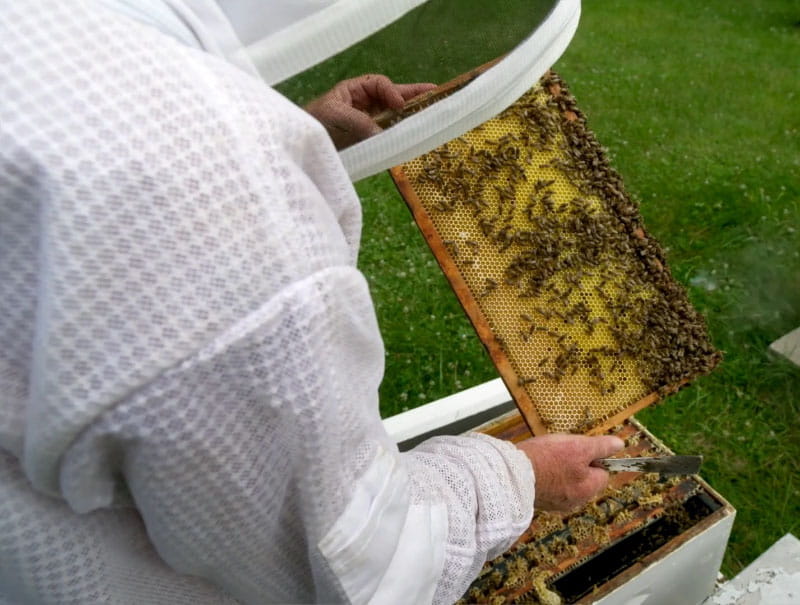
The farm generates vital revenue for the tribe and helps the Ioway, also known as the Báxoje, reconnect with their culture – and the land. The tribe found historical evidence that diverse irrigation processes mimicking a more natural system had been in place on the land within the past 200 years.
"Holism is about everything being parts of the whole," said Lance Foster, tribal historic preservation officer and former vice chair of the tribe. "You cannot have health without the land. You cannot have good food without the land. The Ioway don't have a word for wilderness, because to us, it wasn't wild. It was our home."
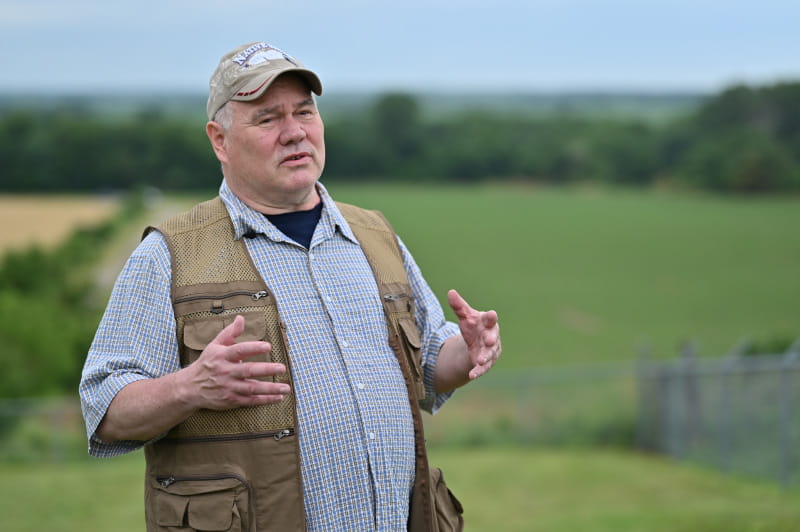
The tribe also started practicing adaptive multi-paddock grazing, a system of managing livestock to mimic the constantly moving herds that once roamed the prairies so that their grazing patterns encourage more biodiversity in the soil.
"Once we have our healthy soils, we'll be able to have healthy plants, healthy animals, healthy humans," Rhodd said.
That includes the bees. A 2019 study in the journal Global Change Biology found the United States is among the countries where the increasing number of pollinator-dependent crops – such as soybean – has far outpaced the diversity of crops that bloom at different times, giving bees a year-round habitat.
At Ioway Farms, flowering plants line the border of crops.
"Nature hates one crop; it hates a monoculture," said Eric Fuchs, a consultant with Understanding Ag, a regenerative agriculture consulting company that works with the tribe to implement regenerative practices. "So, we want to see diversity. A lot of the fields, we'll have pollinator strips around the edge, and we'll have multi-species cover crops planted. There is living root in the soil at all times. There will always be something when you come to the Iowa tribe that will be green."
The decision to move away from monocropping was an easy one, tribal leaders say, even if the work involved has been difficult. The Ioway believe making their land more diverse and productive year-round is the key to solving challenges from sustainability to food security to soil health.
"There are a lot of different definitions of regenerative," Fuchs said. "From my perspective, it's leaving things better than they started out. A lot of things in agriculture over the last 100 years or more, it seems like it's a 'take, take, take' agriculture. We do things … that actually improve the soil for future generations."
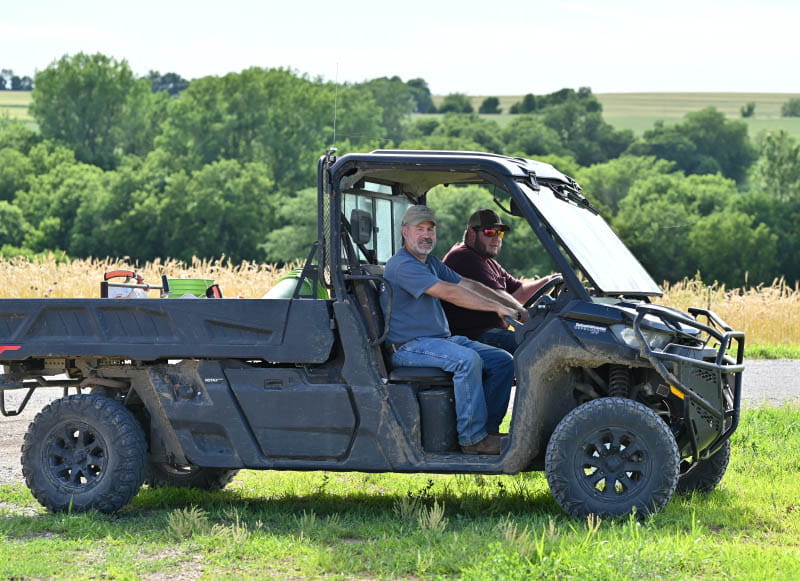
They're seeing signs of success already. Improvements in the quality of the tribe's soybean yield have paved the way for valuable business with tofu producers, for example.
"We're actually developing new markets that we've never had before," Rhodd said. "I'm very proud to say that the farm team has had 100% food production across all of our acres. That's been one of our goals, and we met that goal."
In the fall, Ioway farmers harvest the crop they planted the previous year and follow directly behind the combine harvester with a seeder, planting cover crops such as rye, along with turnip or radish. The cover crops grow through the winter, and in the spring, the Ioway flatten them to keep the ground temperature lower, control weeds and provide nutrients for the next layer of soybean or corn.
"It makes you feel pretty good when you're driving around in December and stuff is green – not dead," said Kyle Rhodd, the manager of Ioway Farms and brother of the tribe's chairperson. "It's pretty amazing to see."
Kyle said the move to regenerative agriculture has been transformational for the tribe. And it's changed the way he sees the soil.
"I honestly didn't look at the soil as a living thing," Kyle said. "I just looked at it as dirt. Going along on this journey, it makes you realize there is so much more than just dirt on the ground. … There are living organisms down there that are getting taken away from all the chemicals being used.
"With a biology in the soil, making that all mesh – it's already there. Why do that synthetically when you can let nature take its course?"
The Ioway have seen the benefits of caring for the soil in the quality of their produce.
"After one year of regenerative principles, the Ioway came back and said their tofu beans had a better, nuttier flavor and yielded better," Fuchs said. "What we're seeing is what's happening in the soil – healthy soil, healthy plants, healthy animals, healthy food. … We have seen changes that impact all over the country. The way we grow food – the health of our food, the nutrient density of our food – it's a broken system.
"This type of agriculture is a learning curve, but it can be done."
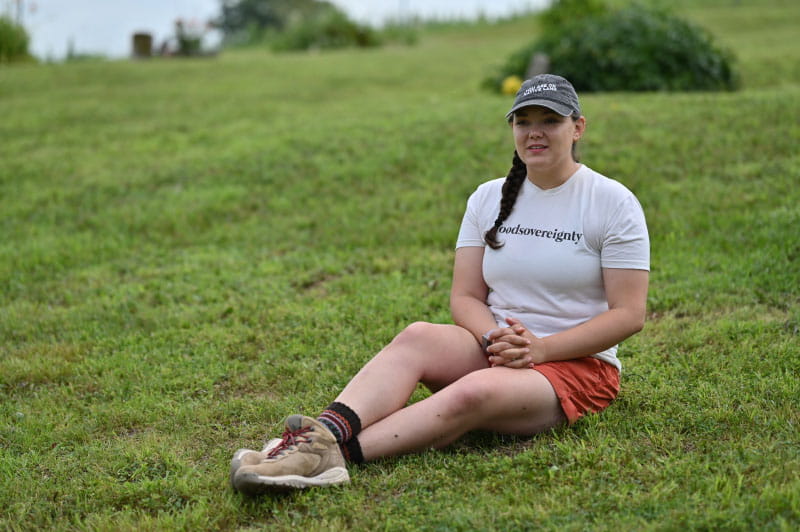
A review of research, published in 2017 in the journal Nutrition Reviews, found diversifying crops may improve diets and nutrition outcomes in people living in low- and middle-income countries.
The Ioway believe that's what regenerative agriculture will do for them. They say providing fresh, nutrient-rich produce for local tribal members and neighbors in their rural area of northeast Kansas – where access to healthy food is limited – will help them take ownership of their own health and reconnect to their land.
"All of us are indigenous to somewhere," Brien said. "All of our ancestors understood that you have to live in balance, and we aren't currently living in balance. That change is going to be difficult, but it's for the best. It's wonderful. It's a beautiful thing."
American Heart Association News sent reporters to five states to cover rural health challenges, and how people in rural America are working to overcome them.





